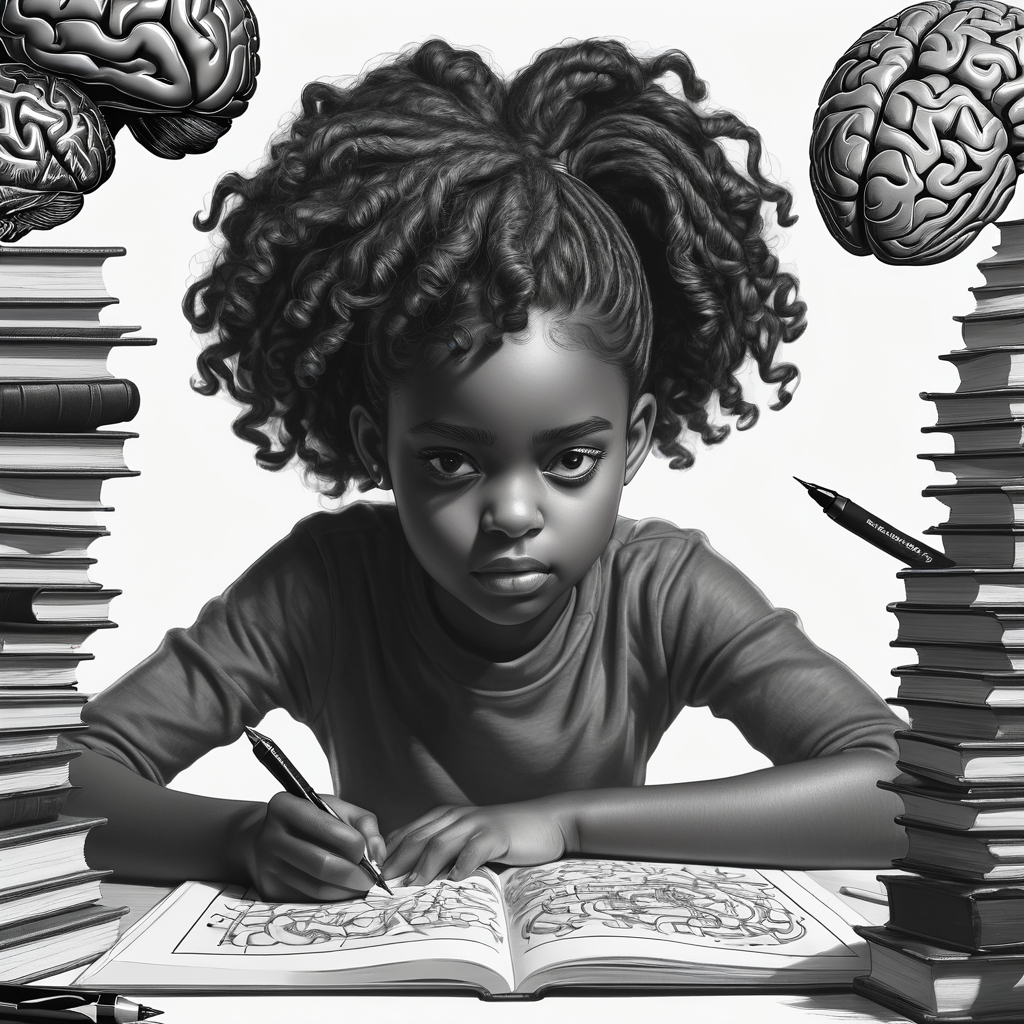About 780 million people or 10% population of the world has dyslexia – Mark Elias (Oct. 31, 2023)

Sam struggled with reading. Letters danced and swapped places on the page, making every sentence a challenge. One day, his teacher introduced a reading buddy program. Paired with Mia, a patient and understanding friend,Sam discovered that dyslexia didn’t mean he was slow or incapable, it just meant he needed a different approach. Mia’s support turned reading from a nightmare into a shared adventure
When we think about reading and writing, it seems like a natural process for most. However, for millions of people around the globe, these seemingly simple tasks present significant challenges. Welcome to the world of dyslexia, where letters dance on the page, and words sometimes refuse to stay in line. But here’s the twist: dyslexia isn’t just about difficulty with reading. It’s a unique neurological variation that offers both challenges and extraordinary strengths.
What is dyslexia?

Dyslexia is a learning difference that affects the way individuals process written language. It’s not a reflection of intelligence or effort; in fact, many with dyslexia possess above-average intelligence and are incredibly creative problem solvers. The brain of a person with dyslexia processes language differently, which can make traditional learning methods less effective.
Symptoms
Dyslexia is a learning disorder characterized by difficulties with accurate and/or fluent word recognition, poor spelling, and decoding abilities. Symptoms can vary but often include:
1. Reading Difficulties
– Slow and labor-intensive reading.
– Difficulty reading aloud, with frequent pauses or mispronunciations.
– Problems understanding what they read.
2. Spelling Issues
– Difficulty spelling words correctly.
– Spelling the same word differently within a single piece of writing.
3 Writing Challenges
– Trouble forming letters or writing them in the correct order.
– Problems with grammar and sentence structure.
4. Phonological Processing
– Difficulty recognizing or producing rhyming words.
– Problems with phonemic awareness, like breaking words down into sounds.
5. Word Retrieval
– Trouble recalling specific words.
– Often using vague language or filler words.
6. Learning New Words
– Difficulty learning new vocabulary.
– Problems remembering names of people or places.
7. Mathematical Challenges :
– Difficulty with word problems in math.
– Trouble with learning multiplication tables.
8. Other Symptoms
– Difficulty following multi-step directions.
– Poor memory for sequences, like days of the week or the alphabet.
– Trouble with time management and organization.
Causes
The causes of dyslexia are multifaceted and can include:
1. Genetic Factors:
Dyslexia often runs in families, suggesting a hereditary component. Certain genes have been associated with dyslexia, influencing the development of brain regions involved in reading and language processing.
2. Brain Structure and Function
Differences in the structure and function of specific areas of the brain, particularly those involved in reading and language processing, are observed in individuals with dyslexia. These include the left hemisphere regions such as the parieto-temporal, occipito-temporal, and Broca’s area.
3. Phonological Processing Deficits
Many individuals with dyslexia have difficulties processing phonemes, the basic sounds of language. This can affect their ability to map sounds to letters and blend sounds into words.
4. Environmental Factors
While genetic and neurological factors play a significant role, environmental influences such as early language exposure, quality of education, and socio-economic status can also impact the development and severity of dyslexia.
5. Neurological Development
Abnormalities in the development of neural pathways related to reading and language skills can contribute to dyslexia. This includes issues with the timing and coordination of neural activity.
Risk factors
Risk factors for dyslexia can increase the likelihood of developing this learning disorder. Key risk factors include
1. Family History: A family history of dyslexia or other learning disabilities significantly increases the risk due to genetic predisposition.
2. Premature Birth or Low Birth Weight: Babies born prematurely or with low birth weight are at a higher risk of developing dyslexia and other neurological conditions.
3. Prenatal Exposure to Nicotine, Drugs, or Alcohol: Exposure to these substances during pregnancy can affect brain development, increasing the risk of dyslexia.
4. Developmental Delays: Delays in speech, language, or other developmental milestones can be indicative of a higher risk for dyslexia.
4. Learning Environment: A lack of early exposure to language, reading, and educational resources can contribute to difficulties in developing reading skills, thus increasing the risk of dyslexia.
5. Other Neurological Conditions: Conditions such as ADHD (Attention Deficit Hyperactivity Disorder) or other learning disabilities often co-occur with dyslexia, indicating a higher risk.
6.Gender: Boys are more likely to be diagnosed with dyslexia than girls, although the reasons for this are not fully understood and could involve both biological and sociocultural factors.
7. Bilingualism: Learning to read in a non-native language or having limited proficiency in the language of instruction can sometimes pose additional challenges, though this is not a direct cause of dyslexia.
Recognizing these risk factors can help in early identification and intervention, which are crucial for managing dyslexia effectively.
Treatments
While there is no cure for dyslexia, various treatments and strategies can help individuals manage and improve their reading and writing skills. Here are some common approaches:
1. Educational Interventions
* Structured Literacy Programs
Programs like Orton-Gillingham, Wilson Reading System, and Barton Reading & Spelling System are tailored specifically for dyslexic learners. These programs use explicit, systematic, and multi-sensory instruction.
Phonics Instruction
Teaching the relationship between letters and sounds helps improve reading skills.
Reading Practice
Regular and guided reading practice helps improve fluency and comprehension.
2. Technological Aids
Assistive Technology
Tools like text-to-speech software, audiobooks, and speech-to-text programs can help dyslexic individuals with reading and writing tasks.
Apps and Software
Programs designed to improve literacy skills through interactive and engaging activities.
3. Accommodations
Extended Time
Extra time on tests and assignments can help reduce the pressure and allow for better performance.
Alternative Assessments
Oral exams or projects instead of written tests can help demonstrate understanding without the need for extensive writing.
Note-taking Assistance
Providing lecture notes or allowing the use of note-taking apps can be beneficial.
4. Specialized Tutoring
One-on-one tutoring with a specialist in dyslexia can provide personalized instruction tailored to the individual’s needs.
5. Supportive Environment:
Positive Reinforcement
Encouragement and positive feedback can boost confidence and motivation.
Parental and Teacher Support
Collaboration between parents, teachers, and specialists is crucial for creating a supportive learning environment.
6. Therapies
Speech and Language Therapy: For those with co-occurring speech or language difficulties.
Occupational Therapy: To address any fine motor skills issues that may affect writing.
7. Cognitive and Behavioral Strategies
Techniques to improve focus, organization, and memory can also be beneficial.
It’s important for interventions to be tailored to the individual’s specific needs, and early identification and support can significantly improve outcomes. Regular assessments and adjustments to the treatment plan are also essential to ensure continued progress.

Jadesola, a high school sophomore, excels in art and music. Her sketches and compositions reflect a keen sense of detail and creativity. However, when it comes to written assignments, she faces an uphill battle. Spelling errors, slow reading speed, and poor comprehension make her academic life challenging. Jadesola often feels misunderstood by her teachers who equate her poor performance in reading and writing with laziness. It’s only after a thorough assessment that her dyslexia is identified, revealing that her struggles are not due to lack of intelligence but a specific learning difference.
That you are dyslexic doesn’t have you are dumb, it just means you will need a different kind of support to showcase your superpower 💪💪💪
📞07088348588
✉️ info@totalpsycheng.com
.

